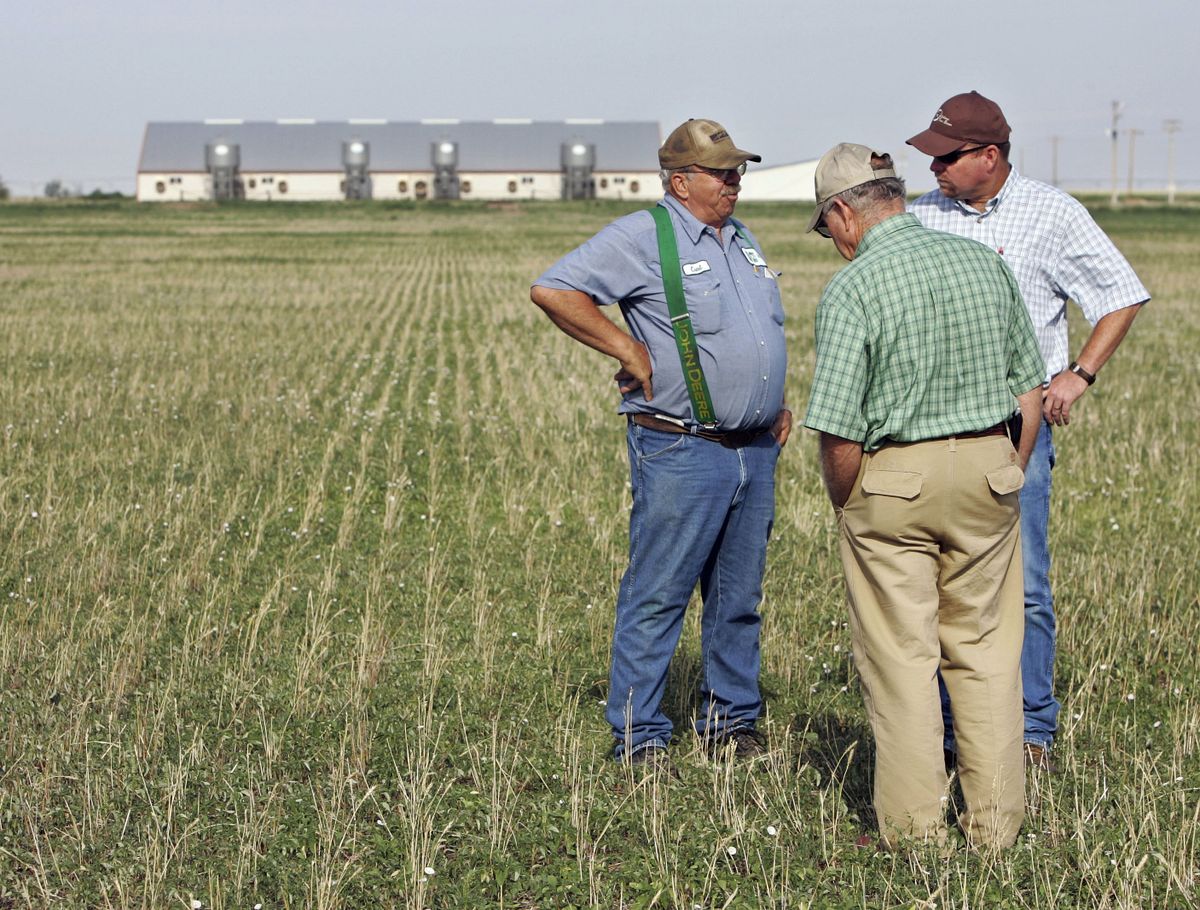Grass could be greener

GUYMON, Okla. – Curtis Raines describes himself as “just a dumb old farmer” who’s not afraid to ask an obvious question: Why grow corn for fuel when it could be used to feed people?
“That just doesn’t make a lot of sense to me,” Raines said.
The 64-year-old Oklahoma Panhandle farmer is growing a 1,000-acre plot of switchgrass, billed as the world’s largest of its type, to test whether the native plant can replace corn in making ethanol.
The Oklahoma Bioenergy Center project is designed to find out whether laboratory experiments using switchgrass to make ethanol can be duplicated on a large scale. The crop will help feed a biorefinery plant planned for southwest Kansas.
Switchgrass has advantages over corn.
As a perennial native to the Great Plains, it doesn’t need to be replanted, requiring less tractor fuel and fertilizer to produce. It can be grown on marginal land, doesn’t require as much water and most importantly, isn’t used for food, so it wouldn’t drive up grocery prices.
“There are a lot of really nice characteristics that … pique one’s interest,” said Blake Simmons, a vice president at the U.S. Department of Energy’s Joint BioEnergy Institute in Emeryville, Calif.
It will be years before cellulosic biofuels – such as switchgrass-based ethanol – are produced at the same levels as corn-based ethanol, Simmons said. But the switchgrass research will answer important questions.
“We need to do some very massive projects very early on to find out the feasibility of this endeavor and see what improvements have to be made,” he said.
In recent years, production of ethanol has taken off with federal mandates aimed at easing dependence on foreign oil. Last year Congress decided to require a total of 36 billion gallons of biofuels to be blended into gasoline by 2022.
But food prices have increased along with ethanol producers’ heightened demand for corn.
The federal government has resisted calls from Texas Gov. Rick Perry, Republican presidential nominee John McCain and other senators to cut this year’s requirement for 9 billion gallons of corn-based ethanol in half to ease rising food costs.
Meanwhile, researchers have intensified their work looking into other ingredients that can be used to make ethanol, including cellulosic alternatives such as switchgrass, wood chips or even garbage.
Oklahoma’s energy secretary, David Fleischaker, said using switchgrass makes sense, especially as rising food costs have “resulted in a pushback against renewable fuels.”
The switchgrass being used in the Oklahoma experiment was planted in June. A few months later it was just poking through the weeds. It will gradually take over the field, developing a deep root system and shading out the weeds.
Hitch Enterprises, one of the biggest agricultural operations in the Panhandle, is leasing the land for the study. Raines, a farm manager for that company, spent a week modifying his equipment to ensure the seed was planted in the way researchers recommended.
He does the day-to-day maintenance on the fields, while researchers make frequent trips from their offices in Ardmore to Guymon – a 360-mile one-way trip – to monitor the progress.
“We’re all kind of learning together,” Raines said.
The bioenergy center – a partnership of Oklahoma State University, the University of Oklahoma and the Samuel Roberts Noble Foundation – is spending $2.2 million on the work being done on the three fields, said Noble Foundation spokesman Adam Calaway.
In the first year after planting, about a quarter to a third of the switchgrass stand’s eventual yield can be harvested. That number jumps to about two-thirds after the second year and 100 percent after the third year.
For Raines, it’s all about common sense.
“I’m a farmer. I want good money for my crops,” Raines said. “But I don’t think taking corn and making gasoline is an answer to our problems.”